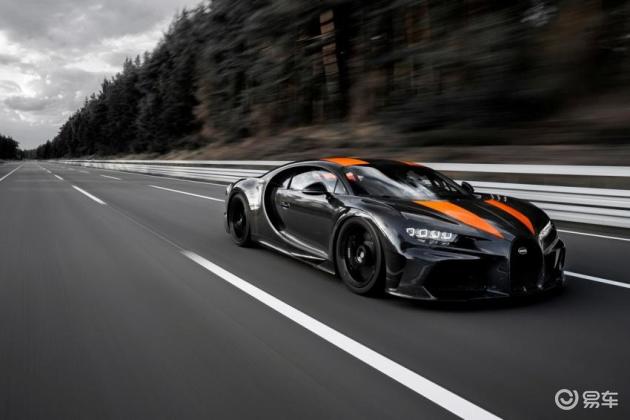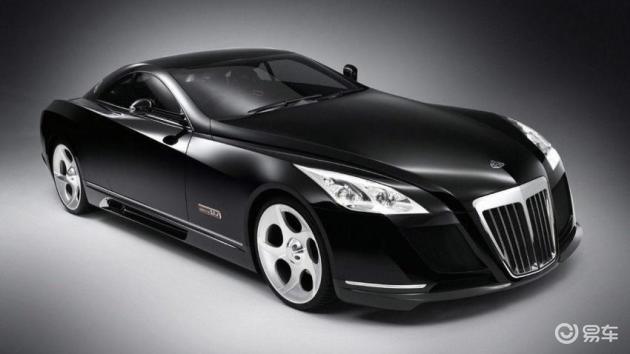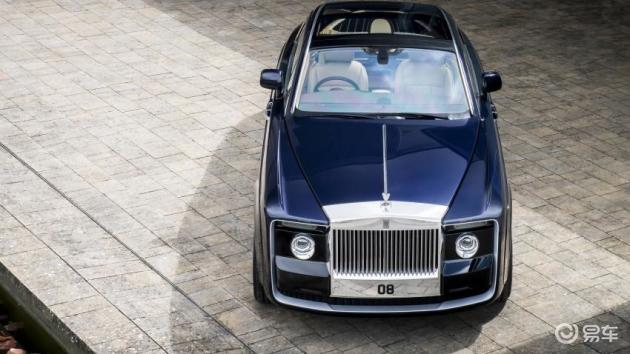
Hong Kong Wujiaoteng Anti-Japanese Heroes Monument. Information picture

In 1945, all walks of life in Hong Kong celebrated the victory of the Anti-Japanese War. Information picture

The Hong Kong and Kowloon Brigade is in action. Information picture

Yangwu Village, Datang, Yuen Long, Hong Kong, has received hundreds of cultural figures and is an important transportation station on the west line of the rescue operation. Information picture

Leaflets distributed by the Hong Kong and Kowloon Brigade. Information picture
[Commemorating the 75th anniversary of the victory of China People’s War of Resistance against Japanese Aggression and the World Anti-Fascist War]
On December 8, 1941, the Japanese army began to invade Hong Kong. At that time, the Governor-General of Hong Kong and Britain only persisted for 18 days, then led nearly 10,000 British troops to give up their resistance and formally surrendered on December 25th. At the time of Hong Kong’s crisis, the Communist Party of China (CPC) held high the banner of unity against Japan, led the people of Hong Kong and overseas Chinese to fight against foreign aggression, and wrote a brilliant and moving history of Hong Kong’s war of resistance against Japan, which became an invaluable common memory and collective epic of the Chinese nation.
When Hong Kong fell, mountains and rivers wept with blood.
During the Anti-Japanese War, Hong Kong was not only an important regional commercial center, but also a key window for China’s external relations, which had a special strategic position and value. However, in the eyes of the British colonists at that time, Hong Kong did not get the attention it deserved. After the outbreak of the Anti-Japanese War in 1937, Britain was indifferent to the defense of Hong Kong. In April 1938, the "Royal Defence Committee" even suggested that Hong Kong’s defence force should be cut in half, and British Prime Minister Winston Churchill also said that Hong Kong’s defence force should be cut to an "appropriate level". It was not until the end of 1941 that the Japanese army approached Hong Kong that the British authorities symbolically ordered two additional Canadian infantry battalions to defend Hong Kong.
After the Japanese occupation of Hong Kong, they burned, killed and plundered, committing all kinds of evils. The people of Hong Kong not only lost their freedom and dignity, but also fell into a deep disaster. The Japanese military government has formulated a large number of unprecedented regulations, and used the crime as an excuse to beat, scold, imprison and even kill Hong Kong residents at will. If Hong Kong residents don’t bow to the Japanese troops on guard, they will be slapped lightly, or they will be killed. They also commandeered comfort women. In August 1942 alone, they commandeered houses in Wan Chai and other places to set up 500 comfort stations. The brutality of the crime was outrageous. In Guangzhou "Nanshi Correctional Field", more than 100,000 Hong Kong refugees who were imprisoned became the experimental objects of the Japanese Bozi 8604 troops’ germ warfare. Many Hong Kong compatriots were lured to other places to work as laborers and suffered inhuman oppression and abuse. According to Hong Kong Medical Practice, Li Shufen, a Chinese doctor who opened a hospital in Kowloon at that time, "treated at least 10,000 rape victims, many of whom were stabbed in the street with bayonets". John Stryker, an Englishman, recalled in Japanese Occupation that he had witnessed "some people were pierced together with ropes through holes poked by bayonets in their arms and pushed into the sea of the harbor" and "three strings of Chinese people like pearls … … One of them fell down exhausted and pulled down the other, so they died one after another. "
Under the ravages of the Japanese army, the bustling "Pearl of the Orient" Hong Kong fell into endless darkness.
The mainstay is like a rock.
A high wind knows the strength of grass, and the board swings to see loyalty. At the darkest hour of the fall of Hong Kong, the Communist Party of China (CPC) actively carried out the United front, international propaganda and armed struggle, led the Hong Kong and Kowloon Independent Brigade to stubbornly persist in the war of resistance in Hong Kong, and established an anti-Japanese base area, becoming the longest-standing, most United and most influential political force in the war of resistance in Hong Kong.
On December 9, 1941, the day after the Japanese invasion of Hong Kong, the Guangdong People’s Anti-Japanese Guerrilla (the predecessor of Dongjiang Column) followed the guidelines formulated by the CPC Central Committee, transferred the backbone of party member to advance into Hong Kong, formed a guerrilla force and launched an armed struggle. At that time, the Japanese army invading Hong Kong was mainly composed of well-equipped elite troops, such as the 38th Division of the Army, the Second China Dispatching Brigade of the Navy and the 23rd Flying Team. The Army alone had 15,000 infantry, artillery and armored personnel. At first, the backbone of party member who advanced into Hongkong was only equipped with a small number of pistols and rifles, with more than 50 people. In order to bring light to the other side of the waves, they ventured into Hong Kong in three directions at night.
After the guerrillas arrived in Hong Kong, they quickly started their work and mobilized the masses. Establish anti-Japanese strongholds in mountain villages with weak enemy forces; Seize the weapons and equipment abandoned by the British troops stationed in Hong Kong and strengthen the anti-Japanese forces; Under the leadership of the Eighth Route Army’s office in Hong Kong, the "provincial and Hong Kong University rescue" was carried out to protect nearly 1,000 patriots in Hong Kong, such as Democrats, cultural celebrities and families of senior Kuomintang officials, as well as expatriates from Britain, India, the Netherlands and Belgium. In February 1942, in order to strengthen guerrilla warfare behind enemy lines in Hong Kong and Kowloon, the guerrillas in Hong Kong were unified into the Hong Kong and Kowloon Independent Brigade, which was subordinate to the Dongjiang column.
Through unremitting efforts, by the summer of 1943, the Hong Kong and Kowloon Independent Brigade had established anti-Japanese guerrilla base areas in Saigon, Sha Tau Kok, Yuen Long, Lantau Island and Sheung Shui with the momentum of single spark can start a prairie fire, and the number of troops increased to about 800, with five regional squadrons, one maritime squadron, two pike squadrons and one squadron directly under it, and established party branches in each squadron. On August 17, 1944, Yan ‘an Liberation Daily reported the achievements of Dongjiang Column in the first half of 1944 under the headline "Dongjiang Column is a great shock to Hong Kong and Macao": "It fought 148 times with Japanese puppet troops, captured 10 Japanese puppet army strongholds, destroyed 377 miles of roads, 70 miles of railways, 12 bridges, killed and injured 440 Japanese troops and more than 560 puppet troops. The Dongjiang column is like a steel knife inserted behind the enemy in South China, which is a great shock to Hong Kong and Macao. "
By the time of the Japanese defeat in August 1945, the Hong Kong and Kowloon Brigade led by the Communist Party of China (CPC) had become the only military force controlling Hong Kong at that time.
Concentrate and unite to resist foreign aggression.
Since the Japanese invasion of China, the Communist Party of China (CPC) people have actively carried out anti-Japanese and national salvation work in Hong Kong by forming anti-Japanese groups, running workers’ night schools and participating in mass organizations, publicizing the Party’s anti-Japanese ideas and rallying the will of Hong Kong people to resist the Japanese war. After the outbreak of the All-round Anti-Japanese War, the Central Committee of the Communist Party of China immediately dispatched Zhang Wenbin, Liao Chengzhi and others to Hong Kong, and successively established organizations and institutions such as the Hong Kong Municipal Committee of the Communist Party of China and the Office of the Eighth Route Army in Hong Kong, which enabled the party organizations in Hong Kong to recover and develop rapidly and accumulated strength for the subsequent anti-Japanese war in Hong Kong.
The Hong Kong Municipal Committee of the Communist Party of China has successively established 47 branches, including workers, students, educated youth and neighborhoods, to carry out in-depth publicity and education on the war of resistance against Japan, promote the awakening of Hong Kong citizens, and unite people from all walks of life in Hong Kong to participate in the war of resistance and national salvation.
The Hong Kong Cultural Work Committee of the Communist Party of China established a number of cultural progressive groups such as the Hong Kong Branch of the All-China Federation of Literary and Art Circles, and organized more than 100 cultural celebrities in Hong Kong, including Xia Yan and Mao Dun, to create anti-Japanese culture, thus cultivating and uniting a large number of progressive people.
The Hong Kong Seafarers’ Working Committee of the Communist Party of China and the peripheral Hong Kong seafarers’ organizations made great efforts to mobilize seafarers to resist Japan and save the country, mobilized about 16,000 seafarers to stop working for Japanese ships, and organized most of them to return to their hometowns to continue to participate in anti-Japanese activities, among which more than 10,000 Hong Kong seafarers died because of the anti-Japanese.
The Alliance for the Defence of China, which the Communist Party of China (CPC) planned to create, extensively carried out mass United front work, organized charity sales, charity performances and other activities to raise anti-Japanese materials, and stimulated the enthusiasm of Hong Kong people for the war of resistance against Japan. The "One Bowl of Rice Movement" launched in July 1941 called on everyone to support the anti-Japanese struggle with the cost of "one bowl of rice". People from all walks of life in Hong Kong actively participated. Many hotels hung banners with the slogan "Welcome to eat rice to save the country" and posted pictures of the heroic killing of the soldiers in the Anti-Japanese War. Many Hong Kong citizens regard participating in related activities as the most glorious and memorable activity in their lives. According to the then "China Business Daily" report, a small vendor usually has to weigh the matches repeatedly, but he did not hesitate to buy five "one bowl of rice sports" meal coupons with the hard-earned 10 yuan money, and said happily, "Our family has done its due duty in Chinese, and our conscience feels at ease".
Through the ages, the castle peak is the proof.
Since the beginning of the Anti-Japanese War, the Communist Party of China (CPC) held high the banner of patriotism in Hong Kong, won wide recognition from Hong Kong citizens, overseas Chinese and international friends with his spirit of sacrifice and fine style, and gradually became the most influential and cohesive political force in Hong Kong during the Anti-Japanese War.
The the Communist Party of China (CPC)-led Hong Kong and Kowloon Independence Brigade is known as the "Children of the Hong Kong people". Party member’s heroic deeds such as Liu Jinjin and Fang Lan are widely circulated. The Hong Kong and Kowloon Independent Brigade also carried out military cooperation with the Allied Forces in accordance with the instructions of the Central Committee and made outstanding contributions to the world anti-fascist war. While completing various tasks well, they rescued 84 British and American troops successively, and received letters of praise and commendation from General mountbatten, Commander-in-Chief of the Allied Forces in Southeast Asia, and General Chennault of the American Army.
抗战胜利后,许多有识之士希望借此契机收复香港,但英国当局却蛮横拒绝。“中华民国”政府虽几经交涉,最终还是被迫同意由英国海军上将夏悫率兵进驻香港接受日军投降。对此,蒋介石曾在日记中愤然写道:“惟英国侮华之思想,乃为其传统之政策,如我国不能自强,今后益被侮辱矣!”
据英方史料记载,当英军重新进入香港时,“成千上万面中国国旗淹没了寥寥无几的英国国旗”。事实也确实如此,当习惯蔑称华人为“支那佬”的夏悫乘坐“不屈”号航空母舰前来“接收”香港时,中国国旗在海面上无数只帆船小艇和岸边几乎每一栋房屋乃至每一扇窗口迎风飘扬。香港居民用这种无声的方式,表达着中华民族的爱国情怀和不屈精神。
1945年9月28日,港九独立大队撤出香港时,香港民众纷纷登报赞颂功绩,自发夹道泪别。港九独立大队发表了饱含深情的宣言:“别了!亲爱的港九新界同胞们!今天,我们离开港九了,但我们关心你们的自由幸福仍和以前一样”“我们希望你们光荣的斗争能引起国际人士应有的尊敬,获得应有的自由、和平与幸福的生活。今天,我们撤退了,但我们的心却是永远不会离开你们的”。
In 1951, Hong Kong folk broke through the obstruction of the British authorities in Hong Kong and raised funds spontaneously to set up a monument in Wujiaoteng Village, where the Hong Kong and Kowloon Independence Brigade once worked. In 1984, the Sino-British Joint Declaration was signed, and Hong Kong’s return to the dawn was in sight. Overseas Chinese and Hong Kong compatriots were both excited and excited, and they donated money to rebuild the Wujiaoteng Anti-Japanese Heroes Monument. The Zhanzhuwan Anti-Japanese Heroes Monument in Sai Kung District was also completed in 1989. On December 28th, 1998, the SAR Government held a grand ceremony. At that time, Chief Executive Tung Chee-hwa personally placed the list of 115 martyrs who died in the Hong Kong and Kowloon Independence Brigade in the Hong Kong City Hall for the public to mourn. In 2002, hundreds of surviving veterans attended the celebration of the 60th anniversary of the establishment of the Hong Kong-Kowloon Independent Brigade. Although they are over 80 years old, their eyes are as determined as ever. They witnessed the history of the Anti-Japanese War in Hong Kong and felt extremely glorious and proud that they had participated in the struggle to defend Hong Kong.
In 2015, Wujiaoteng Monument to the Anti-Japanese Heroes and Heroes was included in the list of national anti-Japanese war memorial facilities and sites. On September 3 this year, 15 members of the Hong Kong-Kowloon Independent Brigade were selected into the list of famous anti-Japanese heroes and heroes, and the monument to the anti-Japanese heroes and heroes in Zhazhuwan was also included in the list of national anti-Japanese war memorial facilities and sites.
The mountains are green and the spirit is eternal! The towering monument tells the posterity the history that can never be forgotten.
(Author: Shang Wei, Zhou Yun, researcher and research intern of the Institute of Military Political Work, Academy of Military Sciences respectively)
 Bugatti Chiron Super Sport 300+
Bugatti Chiron Super Sport 300+ automobili lamborghini s.p.a
automobili lamborghini s.p.a  Koenigsegg CCXR Trevita
Koenigsegg CCXR Trevita Imola in pagani
Imola in pagani Bugatti
Bugatti Mercedes-Benz Exelero
Mercedes-Benz Exelero Bugatti Centodieci
Bugatti Centodieci

 Bugatti La Voiture Noire
Bugatti La Voiture Noire



